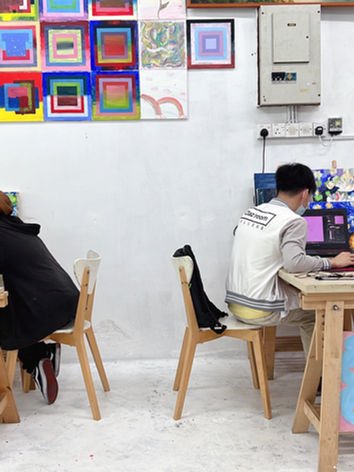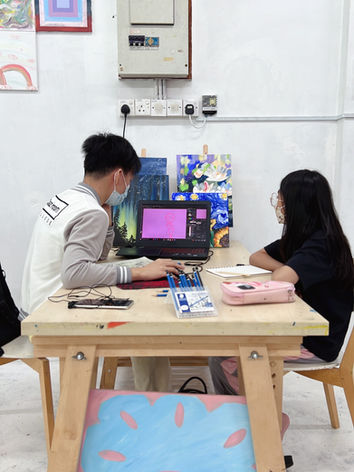ART FOUNDATION
FOR AGES: 9-12 YEARS
COURSE OVERVIEW
This year-long art course for students focuses on developing foundational skills in drawing, painting, and portraiture. Students will learn techniques in graphite, charcoal, watercolors, acrylics, and other materials to create dynamic and visually interesting artworks. The course is divided into four terms, each of which focuses on a specific aspect of art.
COURSE OBJECTIVES
-
Develop hand-eye coordination and control through various drawing exercises.
-
Understand perspective, spatial relationships, and light and shadow techniques.
-
Learn the properties and techniques of watercolor and acrylic paints.
-
Understand color theory and mixing techniques.
-
Explore different painting styles and techniques, including glazing, impasto, and scumbling.
-
Develop skills in portraiture and figurative drawing, including capturing the gesture and movement of the human body.
Course Outline
JAN - APR
2025
TERM 1
Introduction to Drawing and Sketching Techniques
-
Introduction to different types of pencils, erasers, and papers
-
Understanding line weight and shading techniques
-
Basic shapes and forms
-
Drawing exercises and practice to develop hand-eye coordination and control
Sketching techniques and exercises to enhance observation and perspective
-
Developing observational skills
-
Understanding perspective and spatial relationships
-
Sketching exercises to improve accuracy and proportion
-
Introduction to light and shadow
Still life drawing and shading techniques using graphite and charcoal
-
Introduction to still life drawing
-
Techniques for setting up and arranging a still life
-
Shading techniques using graphite and charcoal to create depth and dimension
-
Development of personal style and experimentation with different techniques
AUG - NOV
2025
TERM 3
Introduction to portrait drawing, techniques and materials
-
Introduction to portrait drawing: Understanding the proportions of the face
-
Materials used in portrait drawing: Graphite pencils, charcoal, pastels
-
Techniques used in portrait drawing: Hatching, cross-hatching, shading, blending
-
Creating basic sketches of the face
Portraits
-
Working from live models: Capturing facial features
-
Creating sketches of the face from different angles
-
Adding shading and texture to the portrait
-
Experimenting with different materials and techniques
Figurative drawing
-
Introduction to figurative drawing: Capturing the human form
-
Working from live models: Capturing the gesture and movement of the body
-
Experimenting with different poses and angles
-
Creating finished drawings of the human form
APR - JUL
2025
TERM 2
Introduction to watercolours, their properties, techniques and materials
-
Introduction to watercolour painting
-
Overview of different types of watercolours and their properties
-
Techniques of watercolour painting: wet-on-wet, wet-on-dry, layering, etc.
-
Materials needed for watercolour painting: brushes, paper, palette, etc.
-
Practice exercises to develop control and precision with watercolours
Colour theory and mixing exercises
-
Understanding colour theory: primary, secondary and tertiary colours, complementary colours, warm and cool colours, etc.
-
Introduction to colour mixing: how to mix colours using watercolours
-
Colour mixing exercises to develop an understanding of how different colours interact and create new colours
-
Experimenting with different colour schemes and effects
Creating a landscape painting using watercolours
-
Introduction to landscape painting: composition, perspective, light, and shadow
-
Planning and sketching a landscape painting
-
Techniques for creating different effects in landscape painting
-
Creating a final landscape painting using watercolours















